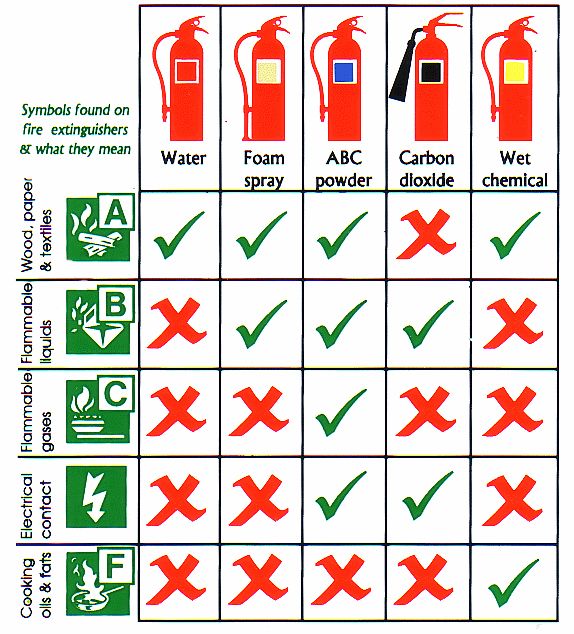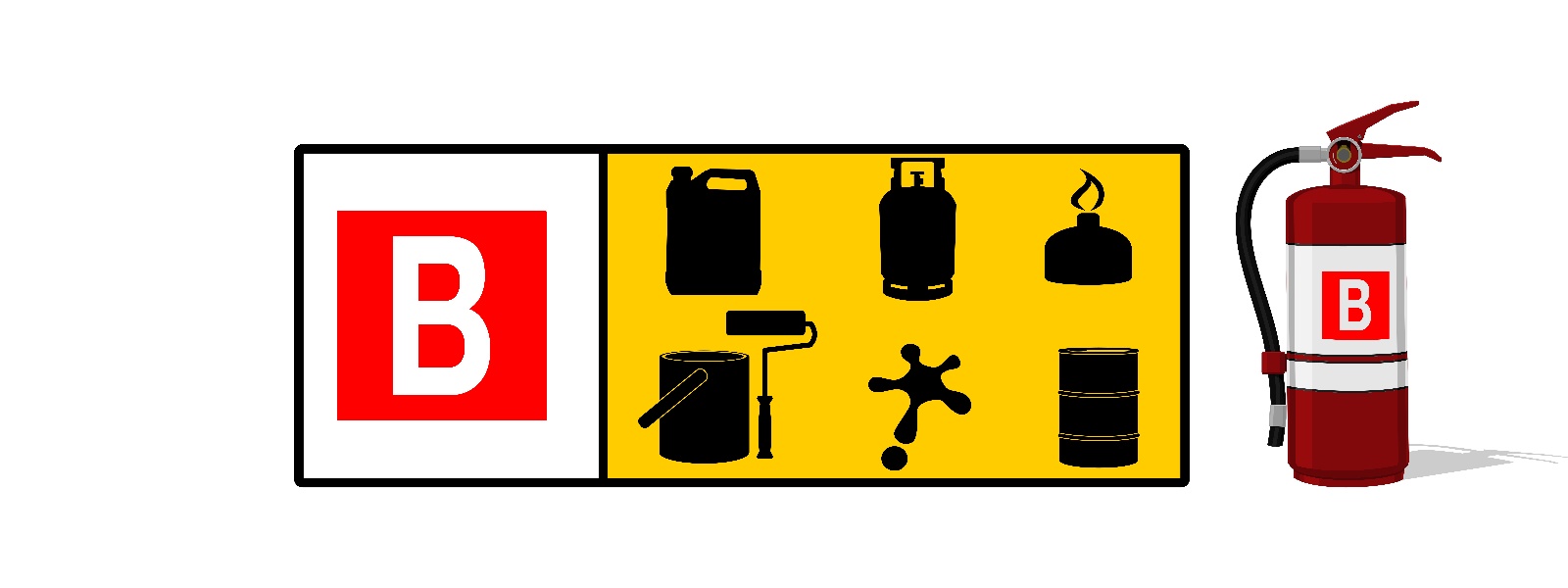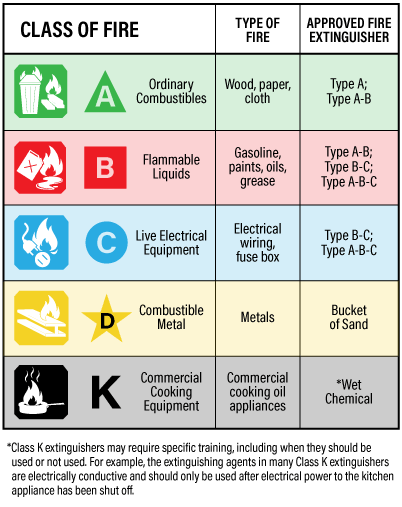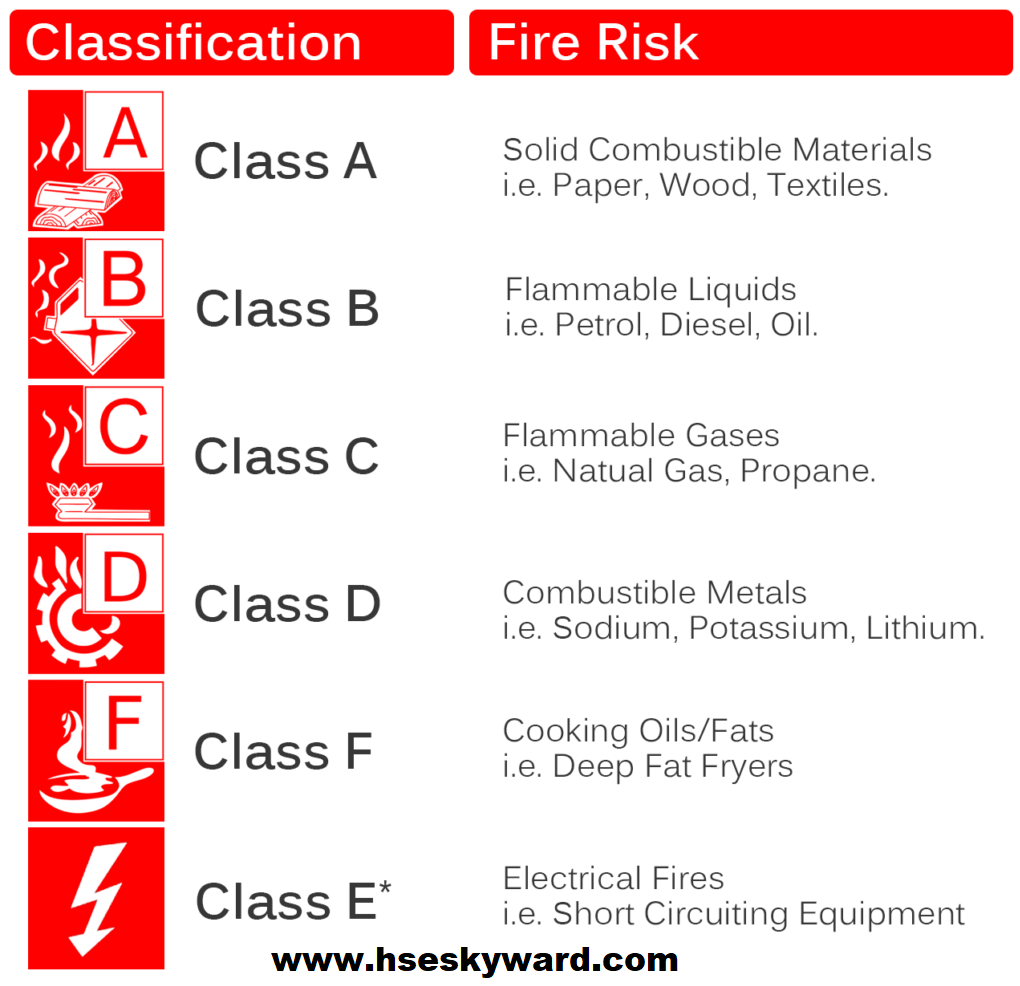class b fires use the following as fuel
Gasoline or diesel fuel Propane Butane Methane Acetone Acetylene These materials are typically found in lacquers solvents oils and oil-based paints. Lowering the temperature of the burning wood or paper.

Abcs Of Fire Extinguishers Fire Prevention Services The University Of Texas At Austin
Class B fires flammable liquids.

. They are the fuel source in the fire triangle fuel heat oxygen chemical reaction. Which material is a Class B fuel. Following establishment of fire boundaries 5.
Class B and C. Class C Class C Fires. Like hydrogen butane or methane Class D fires combustible metals.
Larger models of these fire extinguishers are listed for Class A as well as Class B and Class C fires which makes them quite suitable for use on fires in electronic equipment. Lamp hot plate c. Currently the only effective extinguisher rated as Class K is the Wet Chemical fire extinguisher.
Class Bfires involving flammable gases or liquids such as propane oil and gasoline Class Cfires involving energized electrical. Amount of water and. Lowering the temperature of the.
Grease paint thinner. There are six classes of fire. Firefighting Class B A A class B fire is most successfully fought by.
It is therefore very important to understand the four different classifications of fuel. Solid combustible materials that are not metals. They contain an extinguishing agent and use a compressed non-flammable gas as a propellant.
Smothering effects which deplete the oxygen supply work best to extinguish Class B fires. Duration and range of discharge used in extinguishing test fires. When discharged these agents are in the combined form of a gasmist or a liquid which rapidly evaporates after discharge with about twice the range of carbon dioxide.
ABC fire extinguishers are red in color and range in size from five pounds to 20 pounds. Class B - Flammable liquids. Class B Class B Fires are fueled by flammable or combustible liquids which include oil gasoline and other similar materials.
There are four classes of fires. Which type of extinguishing agent is used to extinguish a Class B fire. Class A Class A fires involve ordinary combustible materials such as cloth wood paper rubber and many plastics.
These extinguishers use a wet mist containing an alkaline mixture like potassium carbonate potassium acetate or potassium citrate which interact with the cooking media oil grease or fat to create a type of foam that blankets the oil or grease cooling it and preventing. Smothering the burning liquid. Dry chemical extinguishers are usually rated for class B and C fires and may be marked multiple purpose for use in A B and C fires.
An APW water extinguisher is safe to use on an electrical fire. Class A fires combustible materials. Flammable liquids include gasoline diesel fuel oils tars petroleum greases solvents alcohols and oil-based paints.
Ordinary solid combustibles such as paper wood cloth and some plastics. Remove fuel B If you have a fire in the engine room your FIRST act should be to _____. Grease can also serve as fuel for a Class B fire.
Extinguishers with an A rating are designed to extinguish fires involving these ordinary combustible materials. Carbon Dioxide extinguishers are designed for which types of fuels. QUESTION 1 Class B fires involve which of the following fuels.
Flammable liquids gases and solvents. These fires are fought with dry chemicals foam vaporizing liquids carbon dioxide and. FIRE EXTINGUISHER TRAINING QUIZ.
Discharge the fixed CO2 system into the engine room. A Class B fire is best extinguished by. As alluded to above Class B fires are ones in which flammable liquids andor gases become involved.
Class Afires involving ordinary combustibles such as paper trash some plastics wood and cloth. Gasoline oil grease acetone. Class A Class B Class C Class D Electrical and Class F.
Any non-metal in a liquid state on fire. Energized Electrical Fires are known as Class C. The fuel for the fire as follows.
Caused by flammable solids such as wood paper and fabric Class B fires flammable liquids. Any of the following may be the fuel source for a Class B fire. The fuel for a Class B is a combustible gas or liquid.
Creating a chain reaction between the molecules of the burning material. Typical Class B fires occur with spills or pools of liquids found near rubber-tired vehicles drills bulk fuel storage areas maintenance shops and lube operations. A rule of thumb is if it leaves an ash behind it is a Class A fire.
Metals magnesium and sodium. Like hydrogen butane or methane. Such as petrol turpentine or paint Class C fires flammable gases.
Class A - Wood paper cloth trash plastics. Class B fires involve liquids that Boil. QUESTION 2 The fire tetrahedron consists of the following elements.
Wood paper cloth rubber trash and plastics. Such as petrol turpentine or paint Class C fires flammable gases. This preview shows page 1 - 2 out of 3 pages.
Firefighting Attack Cooling B. An example of two Class B fuels would be. Class B Class B fires involve flammable and combustible liquids such as gasoline alcohol oil-based paints lacquers.
Class A B and C. Flammable liquids such as alcohol ether oil gasoline and grease which are best extinguished by smothering. Class A portable fire extinguishers are rated from 1-A through 40-A based upon the.
Chemicals such as magnesium aluminum or potassium.

Types Of Fires Kidde Fire Safety

What Is A Class B Fire Extinguisher Used For

Fire Extinguisher Types How To Choose The Right Class

Fire Extinguishers Portable Osh Answers

The Types Of Fire Extinguishers Classifications Water Foam Co2

Class B Fire Extinguishers Combustible Gases And Liquids Strike First Usa
Study Guide Chapter 2 Fire And Fire Extinguisher Classifications Boater S Academy

